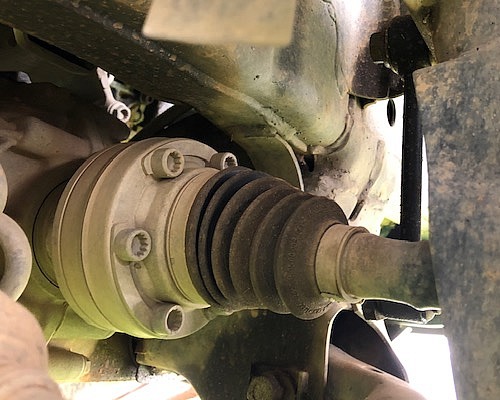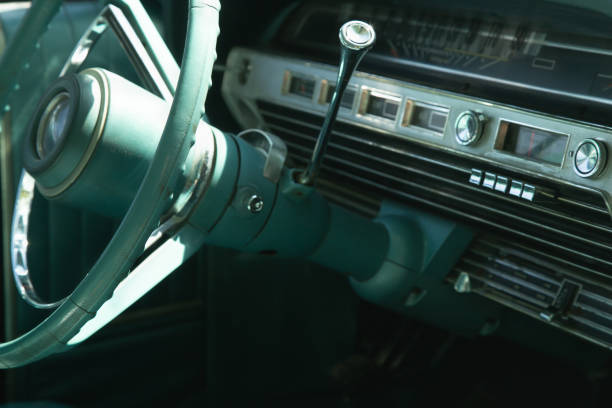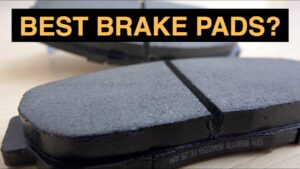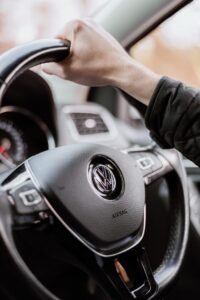Do you keep hearing a clunking sound when turning your vehicle? If you do, You don’t have to worry anymore. Read this article completely to figure out how you can get rid of noises while driving your car.
A Car is a mighty collection of sophisticated techno equipment and a collective Invention of many Engineers. A Good and decent vehicle represents your social status in society. Also in today’s world usage of vehicles has rapidly increased specifically due to the pandemic outbreak. (thanks to coronavirus) People are more likely to travel in their vehicles to avoid possible contact in public places and avoid gatherings etc… Accommodating with own vehicles is a bit primitive. When we view the world from a global perspective it may sound vigilant but everything bails out when it comes to our safety isn’t it?
It is one’s primary duty to take care of their vehicles, especially in these current scenarios because the experts were, not ready to travel along with you to the garage and fix them on hand. so, it is far more than better to take care of your vehicle with your own hands instead of relaying it and for someone to arrive and fix it.
This article will help you avoid those annoying sounds that your vehicle constantly makes i.e. “clunking sounded when turning” –
Table of Contents
What Is A Clunking Sound and Where Does It Come From?
When cornered specifically, the clunking sound might see a bit overrated issue. But trust us nothing is ignorable when it comes to your vehicle that you prefer commuting to and fro forever.
A Clunking Sound is an epitome of clustering bolts that when braced together produce persistent chronic noise while you turn your vehicle towards the preferred direction.
The sound comes from the Sway Bar that connects the front wheels with end links.
Reasons for the Clunking Sound When Turning Your Vehicle:

- The Primary and most reasonable reason for the Clunking sound when turning is because of the ripped boots above the CV Shafts or we can say CV Joint.
- The ripping of Boots will cause a Constant leakage of Grease and thus release in the falling of Ball Bearings this section belongs to the CV SHAFTS.
- Constant Leakage in the Struts may also cause the Clunking Sounds Periodically.
- Make sure the bolts are torqued with manufacturer specifications.

- If your upper ball joint is moving when applied pressure then it is a bad sign.
- The disorientation of Assemblers inside the Sway Bar is a fine standard reason.
These are the primary reasons behind the annoying clunking sound that comes out of your vehicle.
How To Troubleshoot Your Vehicle to Find Out The Clunking Sounds?
Troubleshooting your vehicle for clunking sounds is a simple and common known method –
- Lift your car by using a floor jack.
- Grab ahold of your wheel and place your hands in a 12-6 clock position and try to put more pressure and bring the movement in your wheel. If the wheel moves according to the pressure from the clock end then there’s trouble.
- Find the Sawy way bar by crawling below your vehicle and try to push it back and forth.
- If you find any movement which is not supposed to happen then your var is in trouble.
- Another Classic method is, Try driving your car in a curvature path and roll down the windows while turning your car and pay some attention to the sound.
- Check out the boots behind the wheel above and below the CV shafts and if you find any ripping then there’s a trouble that needs to be corrected.
How to Fix the Clunking Sound When Turning?

Many ways cause the Clunking sound in your Vehicle.
We go step by step and inspect prominently Howe to fix the Clunking Sound.
1. CV SHAFTS: Helps to rotate the front wheel according to the steering.
- Buy a brand new axle that is available in the market. Lift the wheels from the ground.
- Remove your vehicle’s front troubled wheel by loosening up the torques using an air gun.
- Gently remove the ball joints with a wrench.
- Then the whole Hub off slides off the axle. Follow the same with the other end.
- Make sure you place a collector to collect the leaking fuel that drips off the transmission.
- Here’s a productive trick for you, Before replacing it with a new axle apply thick grease at both the end of the new axle to hold stiff while replacing.
- Repacing a new CV shaft means replacing the ripped boots too. This is a piece of combined equipment so no need to worry anymore about the boots.
- Put one end inside the transmission and the other with the nuts and close I with the Hub.
- Now put the Wheel back on and make sure the torque used is a manufacturer specified
- Tighten up your Bolt and you are good to go now.
2. Wrong Specified Torques: Simple and Easy
- Lift your car.
- Place your hands 3-9 clock position and wiggle up the wheel.
- Grab a wrench and tighten up the bolts.
- Make sure the torques are exactly the manufacturer’s mentioned types.
- After fixing the bolts wiggle your car again.
- If there is no movement then you’re good to go.
3. Sway Bar: A Bar that connects Both the Front wheels.
- Rise above the ground.
- Get rid of your front when just as guided as above.
- Find the Sway Bar (The long bar that connects the stabilizer bolts at both ends)
A stabilizer is the one that assembles the sway bar and the front wheel.
- Check the Stabiliser by wiggling down and checking the loosing of Stabiliser Bolts.
- If the bolts get wiggle up and down you need to replace them.
- Buy a brand new stabilizer from the market. It is the only way to fix it.
- Now replace the Bar with both ends accumulated with a bushing and wash bar that will insulate the joining section.
- Tighten up both ends of the Stabiliser with a proper wrench.
- Fix the wheel back now and you’re ready to ramp up.
Note: Please don’t forget the other side because as mentioned before the sway bar goes on both sides. If you find any trouble at the other end grab another stabilizer and follow the same steps.
4. The Wheel Bearing Trouble:
These multiple troubleshooting processes and fixing specifications might seem a bit confusing for the first-timers so if you have any doubt regarding the fixation make sure you contact a Mechanic.
The wheel bearing is intentionally unmentioned inside the article. The trouble in the wheel bearing might only cause the clunking noise in very rare cases. The odds are pretty low when compare to the above-trouble sections.
Also, replacing a wheel bearing sure takes a lot of effort and financial credit so it is highly preferable to consult an expert to fix the problem.
All the above-mentioned systems like – CV SHAFTS, Bad torques, and Sway Bar locate behind the vehicle and unignored in most cases.
Acting on them and fighting back against the trouble might be neglected in any case considering the non-physical evidence.
So, crucifying your vehicle in those difficult situations is important and preferable. If you hear any clucking sounds while turning your vehicle please do not neglect or take it for granted. Because multiple reasons may figuratively act on these kinds of unnoticed troubles. So, pay attention to your vehicle and make sure it runs nice and smooth.
The Clunking/Clicking sounds are the very minute and sloppy reservation that in every case merely fails to grab your attention but when they do make sure you resolve the issue from any further disasters.
The fixing of Clunking sounds includes huge machinery/pieces of equipment to resolve them peacefully. Also, every single piece of equipment is well designed concerning the specific functioning which needs to be paid attention to. Learn about the types of equipment before acting on them. As we discussed before a Car is a collective assembly of different highly technical equipment assigned to run sustainable functions that run the wheel of the car.
They might seem a bit difficult when compared with other resourceful troubles but with proper attention and detailing you can easily bypass the issue and correct them on your own.
Frequently Asked Questions:

So, here are some of the frequently asked questions about causes, how is clunking noise diagnosed? do ball joints make a clunking noise etc?-
What Causes Clunking Sound In Front End?
Clunking noise in the fornt end going is caused by suspension struts. This damage happens if you use your vehicle for off-roading adventures or if there are a lot of potholes on your daily commute.
What Would Cause A Knocking Noise In Front Wheels When Turning?
Depending on the vehicle, one or two ball joints per when they are either load bearing or not. If a ball joint is beginning to fail, you may notice a clunking noise.
How Is Clunking Noise Diagnosed?
- First, you will Check your tires’ lug nut torque and inspect your shock.
- Inspect your ball joints for the cause of clunking noises while driving.
- Inspect your power steering rack.
- Inspect your lower ball joints.
Do Ball Joints Make A Clunking Noise?
Clunking noises are caused by the worn ball joints rattling as the suspension travels up. The squeaking noise is caused by the rubber boot which protects the grease inside the ball joint is damaged.
Can Shocks Make A Clunking Noise?
A metallic clunking noise typically indicates loose mounting hardware. A loose mount can have movement between the bolt and attaching parts, which can cause the shock/strut to move up and down.
How Much Does It Cost To fix A Ball Joint?
The ball joints are inexpensive with a range between $20 to $80 each and Some vehicles cost as low as $60 to $80.And four-wheel drive trucks can range from $160 to $200.
Conclusion:
There can be n number of ways that may harm your vehicle in any given situation. So preparing yourself to modulate them by yourself is important. Because at any given time one can’t rush his trouble to a mechanic to sit, late the trouble. So, be the one who is capable of resolving your trouble when it comes to your vehicle.
A; ways to pay attention while driving. Steady attention not only helps you to commute a safe journey but also helps you arouse the troubles your vehicle facing that are undermined due to non-positive signals.
I hope this article helped you in every way possible regarding the issue – Of why There Is a Clunking Sound When Turning Your Vehicle?
Drive Safe and Stay Safe.
Thank You.
![You are currently viewing Clunking Sound When Turning Your Vehicle? [Problems & Solutions]](https://hydraulicsuspension.com/wp-content/uploads/2021/04/pexels-photo-8869302.jpeg)


